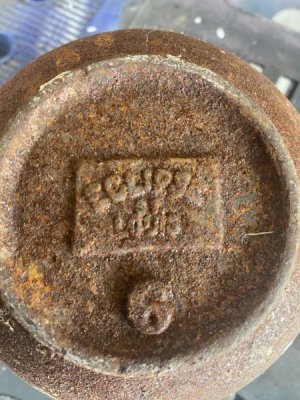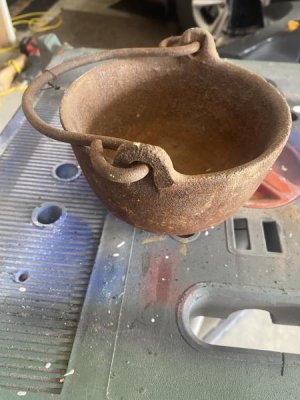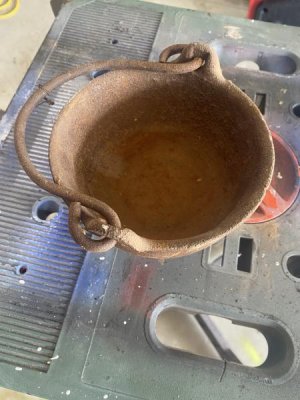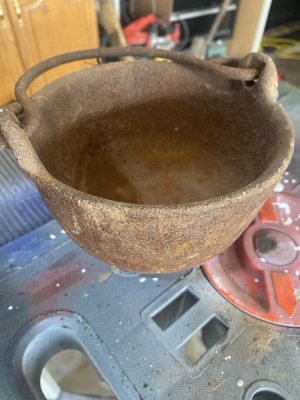Electrolysis looks like a fun/easy way to clean off the rust.
Brief snippet and link at the end...
For our purposes, electrolysis cleaning works somewhat like chrome plating in reverse. By connecting the positive and negative wires the opposite of the plating process, you get crud and rust removal.
The most common set up for an electrolysis iron cleaning tank involves a plastic storage container or the like, sturdy enough to be capable of holding eight or more gallons of water, and a car battery charger. You'll need a piece of metal, either iron or steel, that will serve as a "sacrificial anode" to which the electrical current will flow from the piece being cleaned.
You'll also need turn the water in the tank into what's called an electrolyte, making it more conductive so the current will flow more readily through it. For this, we use Arm & Hammer Super Washing Soda™ (not baking soda), available in the laundry additives section (medium size yellow box), at the rate of 1-2 tablespoons per gallon of water. Washing soda is primarily sodium carbonate, whereas baking soda is sodium bicarbonate. Some people use a swimming pool water conditioner called pH+, which consists of sodium carbonate. Some advanced hobbyists use sodium hydroxide aka lye to achieve a double-acting electrolyte/cleaning solution, but for most, the simpler and less-hazardous washing soda will do.
Gallons of Water --------------Washing Soda
05-------------------------5-10 T. -----1/3 - 2/3 C.
10-------------------------10-20 T.-----2/3 - 1-1/3 C.
15-------------------------15-30 T.-----1 - 2 C.
20-------------------------20-40 T.-----1-1/3 - 2-2/3 C.
25-------------------------25-50 T.-----1-2/3 - 3-1/3 C.
To properly connect the voltage source, you just have to remember the blacK (negative) wire goes on the sKillet. Also, the battery charger you use must be a manual one, or have a manual charge mode. An automatic charger will see the electrolysis tank as a charged battery and shut itself down.
https://www.castironcollector.com/electrolysis.php






